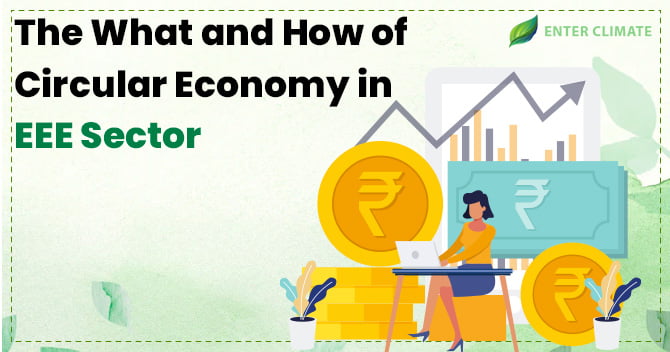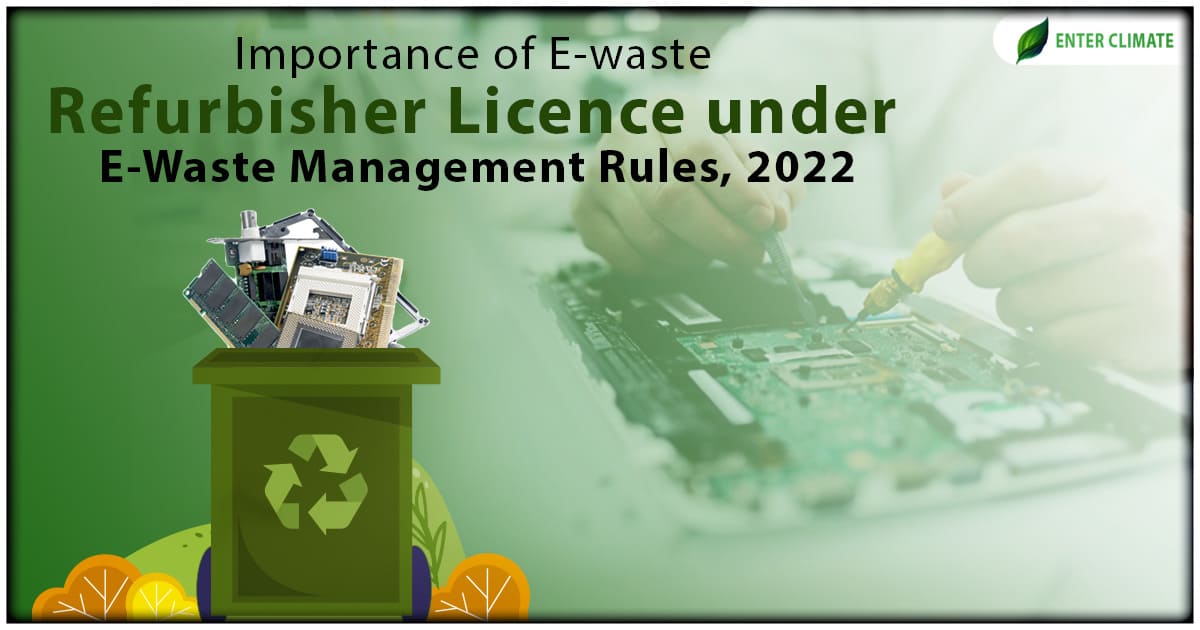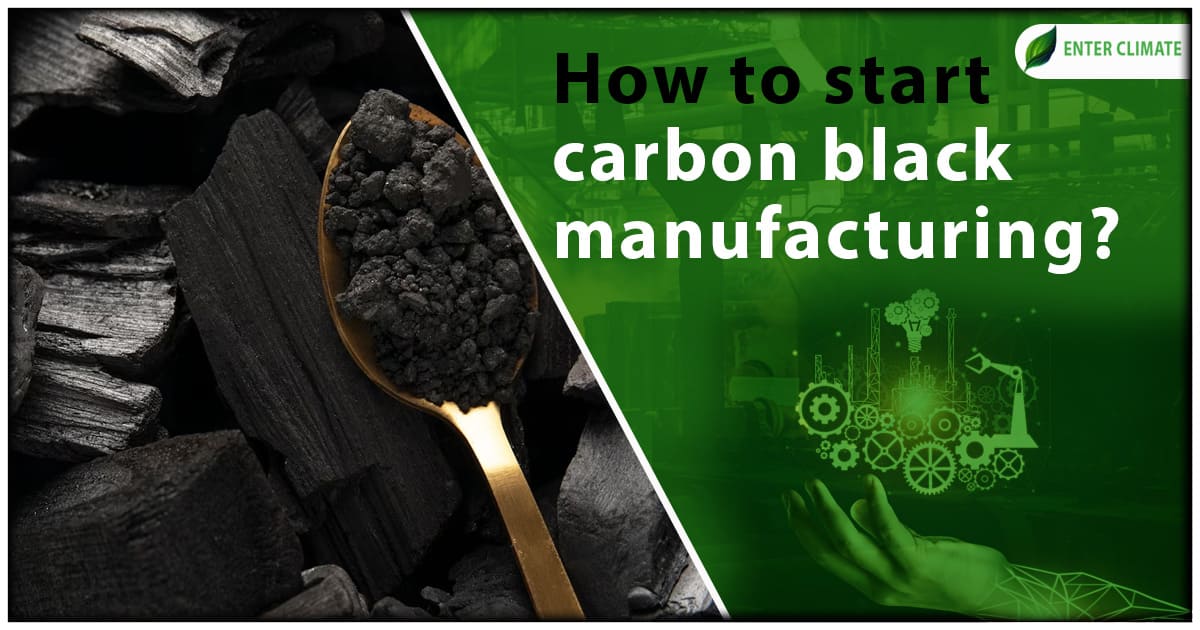The What and How of Circular Economy in the EEE Sector
 05 Aug, 2022
05 Aug, 2022 
The circular economy is defined as the economic model of production and consumption, which mainly involves repairing, reusing, recycling, refurbishing, sharing and leasing the materials, thereby extending the life cycle of the product and ultimately reducing the waste products to the minimum. In the current climate where every state and authority around the globe is looking for ways to have more sustainable production, and industrial sector, the introduction of a Circular Economy in the EEE sector has proven to be a saving grace.
Evolution of Circular Economy
Before the introduction of the Circular Economy in the market, the industrial economy was led by a linear economy based on the model of production and consumption where the raw materials are used to produce a product, which is discarded as waste after the use. But the realisation of depletion of resources and increase in the accumulation of waste led to the evolution of the circular economy in the 1970s.
After the circular economy as a new economy concept was discussed in the 1970s for many years, it was not brought to the limelight until the 2012 World Economic Forum in Davos when Ellen Mac Arthur Foundation and Mckinsey Company published a report evaluating the benefits of shifting to the circular economy which pointed out the substantial benefits to environmental and social. After this report was published, the business and companies started realising its applications to the market and increasing the interest of the business.
Further, it is also hypothesised that circular economy is roughly based on the concept of Industrial Ecology regarding the concept of study and expansion of the industrial system at a micro-level where the products and manufacturing process are reformed to increase the value of resources through the economy.
Circular Economy in EEE Sector
Electrical and Electronics Equipment Sector Market Overview
The market for Electrical and ElectronicsEquipment entails the sale of products that distribute and generate and use Electric power products by stakeholders, including producers’, sole traders and partnerships which is used to manufacture the product that produces, distribute and uses electronic products or energy such as audio, video and semi-conductor. Any apparatus, appliances, conductor, insulator, cable, meter, material or wire that generates, transforms, controls, supplies, and transmits the electricity at a voltage higher than extra-low voltage is termed electrical equipment.
The global market for electrical and electronic equipment is anticipated to increase by $3,192.85 billion in 2021 to $3,521.21 billion in 2022 at a CAGR of 10.3 percent. The companies’ reorganisation of operations and recovery from the COVID-19 impact, which had previously resulted in restrictive containment measures involving social estrangement, remote work, and the closure of commercial activities that created operational challenges, are primarily responsible for the growth. At a CAGR of 9.3%, the market is anticipated to reach $5,031.57 billion in 2026.
Circular Economy in EEE Sector
As per the report published by NITI Aayog and the Ministry of Electronics and Information Technology in 2019 named “Strategy on Resource Efficiency in Electrical and Electronic Equipment Sector[1]”, the Information and Communication Technology sector provides an excellent opportunity for sustainable development as well as using secondary materials management for recovery and operation in the Information and Communication Technology manufacturing. Moreover, while referring to Circular Economy, the report also narrated that acceptance of the consistent production policy through an environmentally sustainable and modular design promotes circularity which increases the ability to utilise secondary resources to channel them back to production processes. The Circular Economy in EEE Sector has the potential to create many opportunities, including: –
- Economic Opportunity
Circular Economy in EEE Sector is said to be very beneficial in making a substantial economic impact. For the manufacturing of Electronic and Electrical Equipment, various resources and raw materials are required; therefore, to make sure this process is not impacted due to the continuous depletion of resources, producers continuously search for sustainable alternatives, which the circular economy provides in comparison to the linear economy which is based on the model of production, usage and disposal.
Furthermore, Electronic and Electrical Equipment waste is also considered a gold mine because of the possibility of extraction of metals from it. According to the FICCI Circular Economy Report, 2017, there is a $0.7 to $1 billion market opportunity for the extraction of gold from e-waste. Additionally, a tonne of ore has an extractable gold resource of roughly 1.4 gram, whereas a tonne of PCBs from mobile phones can yield about 1.5 kg. According to the Global E-waste Monitor 2020, just 17.4% of e-waste was collected and recycled in 2019, resulting in the loss of over $47 billion in recyclable resources like gold, silver, copper, platinum, and other high-value materials.
The Circular Economy in EEE Sector also contributes to creating job opportunities at every stage of the life-cycle of the product. The increase in production, as well as segregation of different channels, lead to more skilled jobs in the sector. Moreover, the Circular economy also promotes the coordination of the formal and informal sector, which not only increase the scope of recyclers but also give recognition to the informal sector, making them financially stable.
- Environmental Benefit
The circular economy was mainly introduced to curb the ever-growing amount of waste and constant degradation of the environment. The adoption of this economy has resulted in reduced usage of resources leading to less mining and restoration and regeneration of ruined mined areas. Moreover, sustainable and environment-friendly products save cost but also lead to less generation of wastage and pollution linked with dumping.
- Social Benefit
The Circular Economy in the EEE sector is practised to create more jobs and a healthy environment that will ultimately lead to improved health and reduce poverty among the people living in the society. This prospect of job opportunities also increases the living standards of the people and will give time for resource mines to recover.
What does Circular Economy in the EEE sector involve?
Under the Circular Economy model for the EEE sector, the government and authorities, along with the stakeholders, including the producers, manufacturers or brand Owners, contribute equally to digitalise product and value chains via digital product passport, increased product lifespan, higher reparability as well as better recovery and worth of resources. By introducing a circular economy in the EEE sector, the policies will contribute towards: –
- Sustainability of Raw material
- Improved product design
- Regulated Collection system
- Comprehensive recycling procedure
- Use of secondary materials
Conclusion
According to the guidelines published by The Ministry of Electronics and Information Technology on The Circular Economy in the EEE Sector, the proper implementation of a circular economy can only be possible by following the recommendations, including conducting a skill development program, designing an institutional mechanism in order to track the critical materials, formulating incentives for setting up infrastructures for products and labeling the circular economy.













